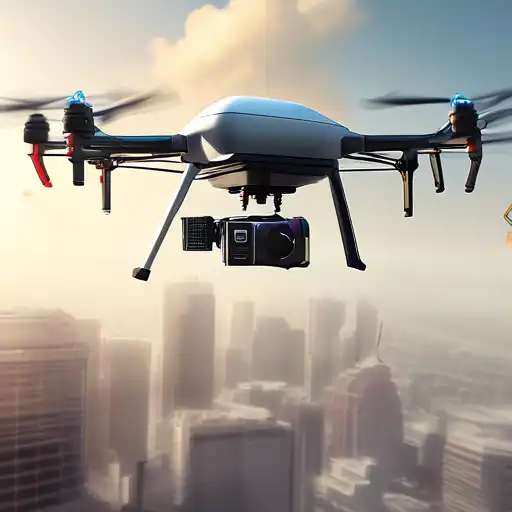Introduction to Commercial Drones
Commercial drones, also known as unmanned aerial vehicles (UAVs), have revolutionized various industries by offering innovative solutions to traditional challenges. From agriculture to real estate, the applications of drones are vast and varied. This article delves into the opportunities presented by commercial drones and the regulatory framework governing their use.
Opportunities Unleashed by Commercial Drones
The advent of commercial drones has opened up a plethora of opportunities across multiple sectors. Here are some of the key areas where drones are making a significant impact:
- Agriculture: Drones are used for crop monitoring, spraying pesticides, and assessing land conditions, leading to increased efficiency and reduced costs.
- Construction and Real Estate: Drones provide aerial views of construction sites and properties, enhancing marketing strategies and project monitoring.
- Delivery Services: Companies are experimenting with drone delivery to reduce delivery times and costs, especially in hard-to-reach areas.
- Disaster Management: Drones play a crucial role in search and rescue operations, damage assessment, and delivering aid in disaster-stricken areas.
Navigating the Regulatory Landscape
While the opportunities are immense, the use of commercial drones is subject to strict regulations to ensure safety and privacy. Key regulatory considerations include:
- Registration and Licensing: Operators may need to register their drones and obtain a license, depending on the country and the drone's weight.
- No-Fly Zones: Drones are prohibited from flying near airports, military bases, and other sensitive areas.
- Privacy Laws: Operators must adhere to privacy laws, ensuring that drones do not infringe on individuals' privacy rights.
- Insurance Requirements: Some jurisdictions require drone operators to have liability insurance to cover potential damages.
Future Prospects
The future of commercial drones looks promising, with advancements in technology paving the way for more sophisticated applications. However, as the industry evolves, so too will the regulatory framework, requiring operators to stay informed and compliant.
Conclusion
Commercial drones offer transformative opportunities across various sectors, but their use is bound by a complex web of regulations. By understanding both the potential and the legal landscape, businesses can leverage drones to achieve operational excellence while ensuring compliance.
